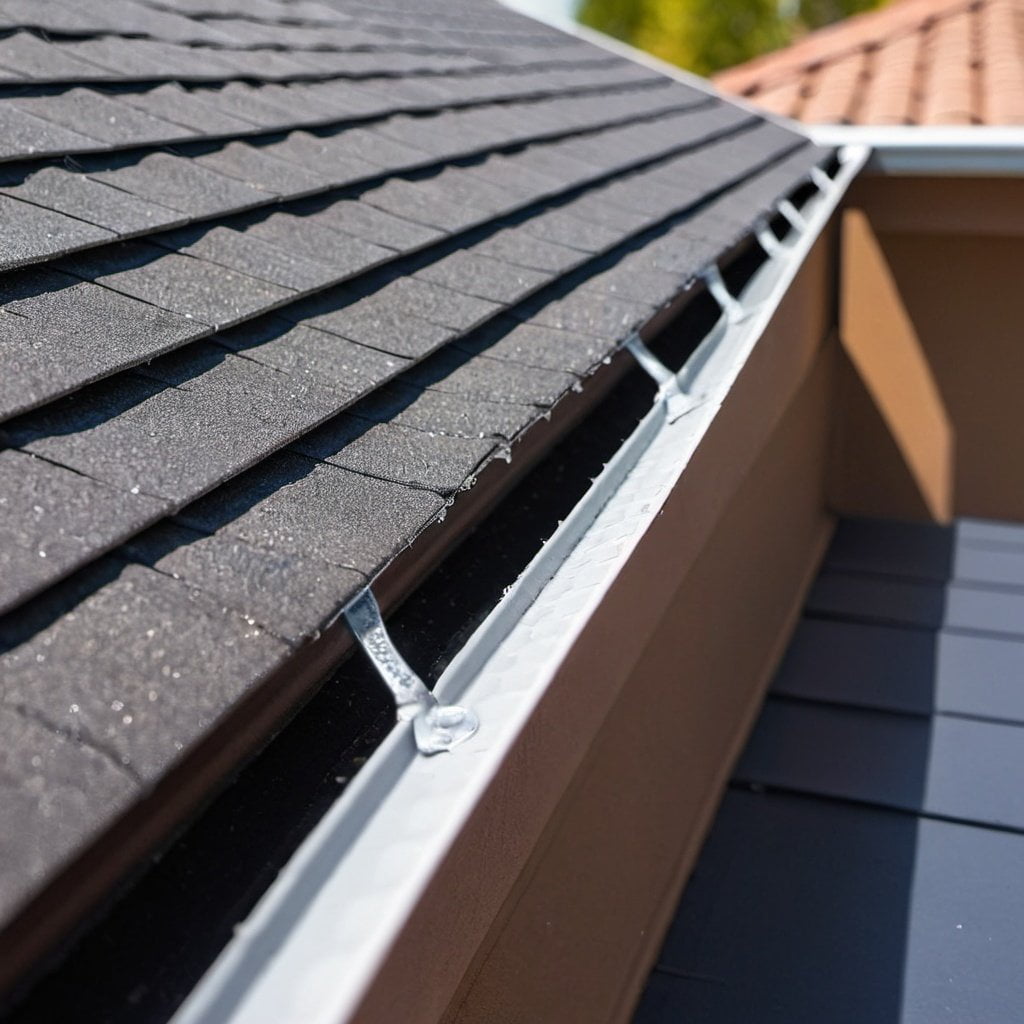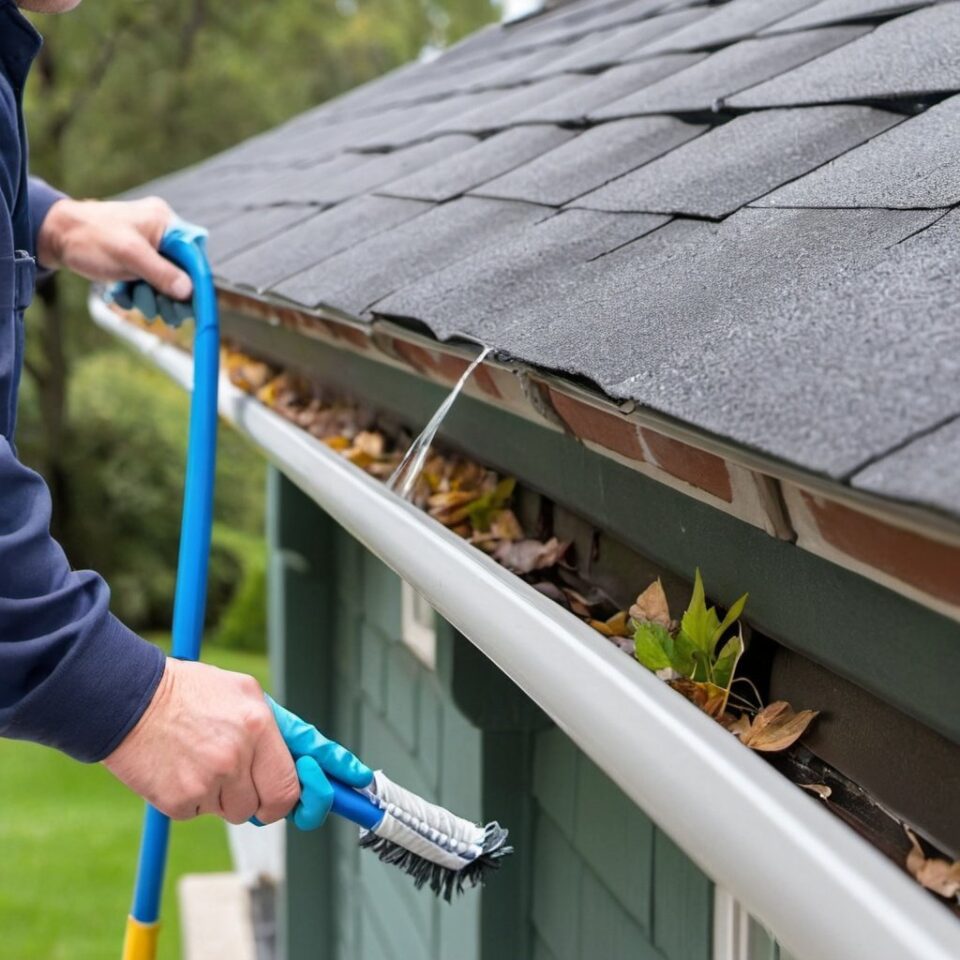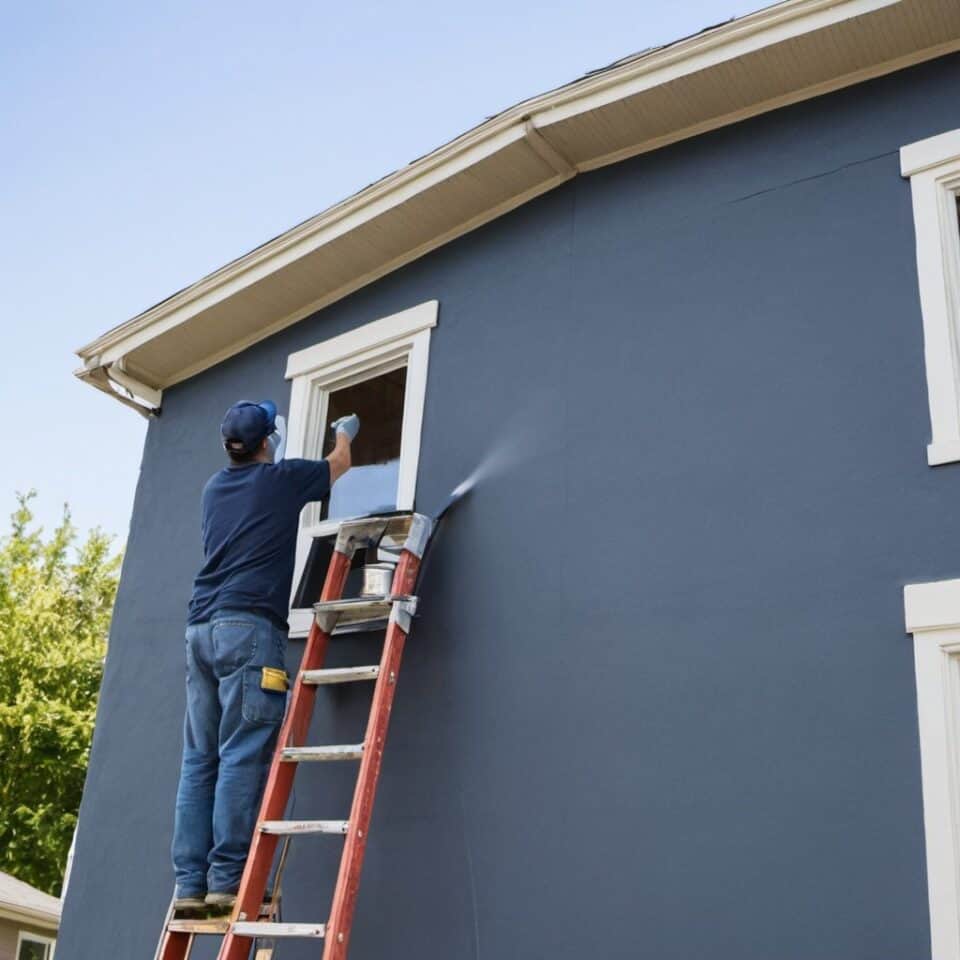When considering the maintenance and protection of your home’s gutters, a common question arises: how long do gutter guards last? Understanding the lifespan of gutter guards is crucial for homeowners looking to invest in a solution that keeps their gutters free of debris and functioning efficiently.
This article will explore the factors that affect the durability of gutter guards, the different types available, and how to maximize their longevity, ensuring you make an informed decision for your home.
What Are Gutter Guards?
Before discussing their lifespan, let’s first establish what gutter guards are. Gutter guards are protective systems designed to prevent debris from clogging gutters while allowing water to flow freely. They act as a filter, keeping leaves, twigs, and other debris out of the gutter system.
Factors Affecting Gutter Guard Lifespan
When it comes to the lifespan of gutter guards, several factors play a role in determining their durability and effectiveness. Understanding these factors can help homeowners make informed decisions about the best gutter guard solution for their specific needs. Let’s explore the key factors that can influence the longevity of gutter guards.
Materials Used
One of the primary factors affecting gutter guard lifespan is the material they are made from. Different materials have varying levels of durability and resistance to damage from weather conditions and debris. Common gutter guard materials include aluminum, stainless steel, vinyl, and copper. Each material has its pros and cons in terms of strength, corrosion resistance, and overall lifespan.
Local Climate Conditions
Another critical factor to consider is the local climate conditions in your area. Extreme weather conditions such as heavy rain, snow, hail, and high winds can impact the lifespan of your gutter guards. For example, in areas with frequent severe storms or intense heat, gutter guards made from more durable materials may be necessary to withstand these conditions and provide long-lasting protection.
Maintenance
The level of maintenance performed on your gutter guards can significantly affect their lifespan. Regular cleaning and removal of debris are essential to prevent clogs and ensure proper water flow. Neglecting maintenance can lead to the accumulation of debris, which can put additional stress on the gutter guard system and potentially reduce its effectiveness over time.
Installation Quality
The quality of installation plays a crucial role in the lifespan of gutter guards. Improper installation can lead to gaps, loose connections, or instability, compromising the guard’s ability to withstand heavy debris and weather conditions. It is recommended to hire a professional installer or follow manufacturer guidelines to ensure proper installation and maximize the lifespan of your gutter guards.
Frequency and Intensity of Debris
The frequency and intensity of debris that your gutter guards need to handle can impact their lifespan. If you live in an area with many trees or where debris accumulation is common, gutter guards may experience higher stress and wear. Consider the type of vegetation and debris in your vicinity when selecting gutter guards and opt for designs that can effectively handle the specific debris encountered.
By considering these factors and selecting gutter guards that align with your home’s unique requirements, you can enhance their lifespan and ensure long-term protection for your gutters and home.
Types of Gutter Guards
When it comes to protecting your gutter system from debris and ensuring its longevity, choosing the right type of gutter guard is crucial. There are several options available in the market, each with its own unique features and benefits. In this section, we will provide an overview of the most common types of gutter guards:
1. Mesh Screens
Mesh screens are one of the most popular types of gutter guards. They are made of fine metal or plastic mesh that allows water to flow through while effectively filtering out leaves, twigs, and other debris. Mesh screens are generally durable and low-maintenance, making them a practical choice for homeowners.
2. Gutter Covers
Gutter covers, also known as leaf guards or gutter helmets, are solid or perforated covers that sit on top of the gutter system, preventing debris from entering while allowing water to pass through. These covers are often made of aluminum or vinyl and can provide excellent protection against clogs. Gutter covers are particularly effective in areas with heavy foliage.
3. Foam Inserts
Foam inserts are another popular type of gutter guard. These inserts are made of porous foam material that fits directly into the gutter channel. They work by allowing water to flow through the foam while blocking debris.
4. Surface Tension Gutter Guards
Surface tension gutter guards utilize the principle of water adhesion. These guards have a curved or rounded shape, allowing water to follow the curve and flow into the gutter while directing debris to fall off the edge. Surface tension gutter guards are often made of aluminum or stainless steel and offer excellent durability and performance.
When choosing the right gutter guards for your home, consider factors such as the local climate, the intensity of debris, and your maintenance preferences. Each type of gutter guard has its own advantages and suitability, so it’s important to assess your specific requirements before making a decision.
Average Lifespan of Gutter Guards
Gutter guards play a crucial role in protecting your home from water damage by keeping debris out of your gutter system. However, it’s important to understand that the lifespan of gutter guards can vary based on several factors.
Types of Gutter Guards
The type of gutter guard you choose can significantly impact its average lifespan. Each type has its own level of durability and resistance to wear and tear. Some common types of gutter guards include:
- Metal mesh guards
- Gutter covers
- Foam inserts
- Surface tension guards
Each of these types has its advantages and disadvantages, and their average lifespans can range from 5 to 20 years.
Materials Used
The materials used to manufacture gutter guards also play a crucial role in determining their average lifespan. High-quality materials, such as aluminum or stainless steel, tend to be more durable and long-lasting compared to lower-quality materials.
Climate Conditions
The climate in your area can significantly affect the lifespan of gutter guards. Regions with harsh weather conditions, such as heavy rain or extreme temperatures, may cause gutter guards to deteriorate at a faster rate. In areas prone to high winds or heavy snowfall, it’s important to choose gutter guards that are designed to withstand these conditions.
Maintenance
The longevity of gutter guards can also depend on how well they are maintained. Regular cleaning and inspections can help prevent debris buildup and ensure proper functioning. Neglecting maintenance can result in clogged gutters, which can shorten the lifespan of gutter guards and lead to severe water damage.
Considering these factors, the average lifespan of gutter guards can range from 5 to 20 years. However, it’s important to note that these are general estimates, and individual circumstances may vary. Regular maintenance and choosing high-quality gutter guards can help extend their lifespan and ensure they provide optimal protection for your home.
Signs It’s Time to Replace Gutter Guards
As your gutter guards age and experience normal wear and tear, certain signs indicate that it’s time to consider replacing them. Ignoring these signs can lead to potential water damage and reduced effectiveness of your gutter system. Here are some common indicators that it’s time to replace your gutter guards:
Sagging
If you notice your gutter guards starting to sag or hang lower than usual, it’s a clear sign that they are no longer providing proper protection. Sagging can occur due to weakened materials or excessive weight from debris buildup, compromising the functionality of your gutter system.
Rusting
Rust is a common issue with metal gutter guards, especially in areas with high humidity or frequent exposure to moisture. When you observe rust spots or corrosion on your gutter guards, it’s a strong indicator that they are nearing the end of their lifespan and should be replaced.
Excessive Debris Accumulation
Gutter guards are designed to prevent debris from entering your gutter system, but over time, they can become clogged and hinder proper water flow. If you find that your gutter guards are consistently accumulating excessive debris, despite regular cleaning, it may be time to invest in new ones that provide better filtration.
Water Overflow
One of the most obvious signs that your gutter guards are no longer effective is water overflow. If you notice water overflowing from your gutters, it indicates that the gutter guards are either damaged, worn out, or improperly installed. This can potentially lead to water damage to your home’s foundation and landscaping.
Water Damage
If you start noticing water stains or damage on the exterior walls or around the foundation of your home, it could be a result of faulty or worn-out gutter guards. Water that bypasses damaged or ineffective gutter guards can seep into the walls, causing moisture-related issues that can be costly to repair.
By keeping an eye out for these signs and addressing them promptly, you can ensure that your gutter system functions properly and your home remains protected from water damage. When it’s time to replace your gutter guards, consider consulting with a professional to help you choose the best option for your specific needs.
Proper Maintenance to Extend Gutter Guard Lifespan
Gutter guards are an essential investment for homeowners looking to protect their homes from debris buildup and water damage. To ensure these protective systems last as long as possible, proper maintenance is crucial. By following these essential maintenance tips, you can extend the lifespan of your gutter guards and keep your gutter system functioning optimally.
Regular Cleaning
Regular cleaning is a fundamental aspect of maintaining gutter guards. Remove any debris, such as leaves, twigs, and dirt, that may accumulate on the surface of the guards. Use a soft brush or broom to gently sweep away the debris. Avoid using sharp or abrasive tools that may damage the guards or gutter system.
Thorough Inspections
Perform regular inspections of your gutter guards to identify any signs of damage or blockages. Look for signs of rust, corrosion, or deterioration in the material. Additionally, check for any cracks, gaps, or loose fittings that may compromise the effectiveness of the guards. Address any issues promptly to prevent further damage.
Addressing Issues Promptly
Whenever you notice any issues, it’s crucial to address them promptly. Repair or replace damaged gutter guards as soon as possible to prevent water from overflowing or bypassing the guards. Water overflowing from clogged or damaged gutters can lead to water damage and potential structural issues.
Maintaining Downspouts
In addition to cleaning and inspecting the gutter guards, it’s essential to maintain the downspouts. Clear any clogs or blockages in the downspouts to ensure proper water flow. Regularly check that the downspouts are securely attached to the gutter system to avoid any leaks or detachments.
Professional Assistance
If you are unsure of how to maintain your gutter guards or encounter complex issues, it’s advisable to seek professional assistance. Professional gutter maintenance services have the expertise and tools to handle routine maintenance and repairs effectively. They can provide comprehensive inspections, cleaning, and repairs tailored to your specific gutter guard system.
By following these maintenance tips, you can significantly extend the lifespan of your gutter guards. Regular cleaning, inspections, addressing issues promptly, and seeking professional assistance when needed will keep your gutter guards in optimal condition, protecting your home from water damage and ensuring the longevity of the gutter system.
Benefits of Replacing Old Gutter Guards
Replacing old and worn-out gutter guards brings several benefits that can significantly improve the protection and functionality of your home’s gutter system. Here are some key advantages of replacing your old gutter guards:
Enhanced Home Protection
New gutter guards provide enhanced protection for your home by effectively preventing debris from clogging the gutters. By keeping leaves, twigs, and other debris out of the gutter system, you can minimize the risk of water overflow and potential water damage to your home’s foundation, walls, and landscaping. This proactive approach to maintaining clean and functional gutters helps safeguard your biggest investment – your home.
Minimized Water Damage Risks
One of the primary roles of gutter guards is to efficiently channel rainwater away from your home. By replacing old gutter guards, you can ensure proper water management and reduce the risk of water damage. With new gutter guards in place, rainwater can flow freely through the system, preventing standing water and potential leaks that could lead to moisture problems, mold growth, and costly repairs.
Improved Gutter System Functionality
Over time, old gutter guards can become damaged, corroded, or lose their effectiveness due to wear and tear. By replacing them with new gutter guards, you can restore the optimal functionality of your gutter system. New gutter guards are designed to fit seamlessly and securely, allowing water to flow smoothly while preventing debris from accumulating. This promotes better drainage, reduces the need for frequent unclogging, and enhances the overall efficiency of your gutter system.
Long-Term Cost Savings
While the initial investment of replacing gutter guards may seem like an expense, it can result in long-term cost savings. By preventing costly water damage repairs and avoiding the need for frequent maintenance or unclogging, new gutter guards can save you money in the long run. Additionally, maintaining clean and functional gutters can prolong the lifespan of your home’s foundation, roof, and exterior, reducing the likelihood of expensive repairs associated with water-related issues.
By understanding the benefits of replacing old gutter guards, you can make an informed decision to improve the protection and functionality of your home’s gutter system. So, don’t overlook the importance of maintaining clean and efficient gutters – invest in new gutter guards and enjoy the benefits they bring.
Professional Installation
One advantage of professional installation is the expertise that experienced installers bring to the table. They have the knowledge and skills to ensure your gutter guards are installed correctly and efficiently. Professionals can assess your needs, recommend the most suitable gutter guard type, and ensure a seamless installation process. By entrusting the job to professionals, you can have peace of mind knowing that trained experts carry out the installation.
Another benefit of professional installation is the time-saving aspect. Installing gutter guards can be a time-consuming task, especially if you have limited experience or a busy schedule. Professionals can efficiently handle the installation, allowing you to focus on other priorities without sacrificing the quality of the job.
Secure Your Home’s Future By Choosing Expert in Gutter Guard Installation
Investing in gutter guards can significantly extend the life of your gutter system, with many lasting over a decade with minimal maintenance. At Davila Construction, we use only top-quality materials to ensure your gutter guards remain effective and durable against harsh weather and debris. Trusting us with your gutter guard installation means choosing expertise and peace of mind.
Our professional team is committed to providing exceptional service tailored to your home’s specific needs. Choose and contact us to protect your home effectively; it’s the best decision for long-term care and efficiency.




